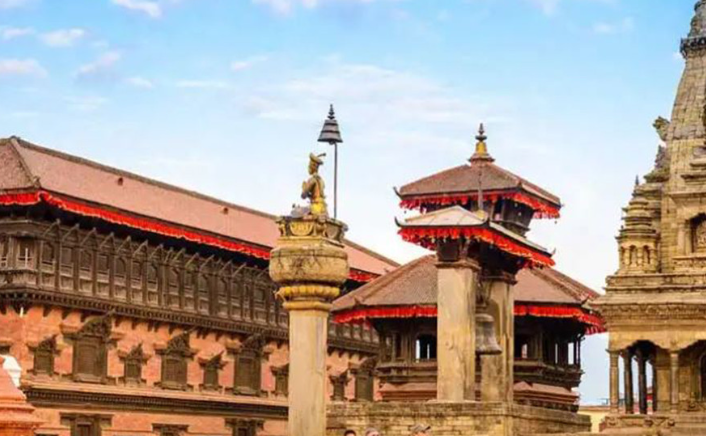Tourism Park Projects in Cox’s Bazar: An Ongoing Wait
The ambitious plan to establish multiple tourism parks in Cox’s Bazar, particularly spearheaded by the Bangladesh Economic Zones Authority (Beza), has faced significant setbacks, leaving these projects on hold for nearly a decade. This delay impacts not only future economic benefits but also the broader tourism and transport arrangements in the region.
Original Scope and Vision
The initial outline anticipated the creation of three major tourism parks to boost the region’s appeal and infrastructure. These included:
- Sabrang Tourism Park spanning approximately 967 acres in Teknaf upazila
- Naf Tourism Park, a 271-acre site also in Teknaf upazila
- Sonadia Eco-tourism Park, covering about 9,467 acres in Maheshkhali upazila
Each park was intended to leverage the unique natural beauty and cultural richness of their respective locations, aiming to enhance visitor experiences and sustainable economic development.
Challenges Behind the Stall
Unraveling a project this expansive is no small matter. It’s faced with challenges ranging from logistical issues, environmental concerns, and coordination among stakeholders. These cause the kind of delays that can make even the most patient traveler sigh—a classic example of “good things take time,” but with the wait stretching far beyond expectations.
Environmental Sensitivities
Given the ecological significance of Cox’s Bazar—including its vast beaches and nearby marine landscapes—careful management is mandatory. Complex environmental evaluations and the necessity of sustainable development approaches may have contributed to the pace of progress, ensuring the parks, once developed, do not compromise their natural charm.
Administrative and Operational Bottlenecks
Another factor behind the prolonged timeline is the alignment of various administrative procedures and financing channels. Often, multiple government bodies and private partners must synchronize their efforts, which can slow down decision-making and project rollout.
| Project | Місцезнаходження | Area (acres) | Development Status |
|---|---|---|---|
| Sabrang Tourism Park | Teknaf upazila | 967 | Stalled for 9 years |
| Naf Tourism Park | Teknaf upazila | 271 | Stalled for 9 years |
| Sonadia Eco-tourism Park | Maheshkhali upazila | 9,467 | Stalled for 9 years |
Impact on Local Tourism and Taxi Services
The postponement of these projects has a ripple effect across the tourism industry in Cox’s Bazar. Without these parks fully operational, the city’s tourism infrastructure cannot expand as envisioned, affecting the influx of both domestic and international visitors. This, in turn, influences related transport services, including taxis and transfers, which serve tourists arriving at airports and hotels.
Taxi and transfer companies rely heavily on established demand from tourist hotspots. A stalled project means fewer guaranteed rides, less predictable fares, and restrained growth opportunities for service providers. Without vibrant destinations drawing traffic, the industry faces challenges in scaling operations and offering competitive prices.
Benefits of Transparent Booking for Visitors
Platforms like LocalsRide.com improve the traveler experience by offering transparent details about vehicle options, driver ratings, and exact pricing—crucial features when heading to emerging or uncertain destinations. Such platforms empower travelers to choose the best-fit vehicle and service for any trip, whether to airports or city locations, adjusting to the fluctuating demand caused by project delays.
Looking Ahead: What Does This Mean for Travelers?
While the long wait might dampen some spirits, there is reason to be optimistic about the visionary scope of these parks. Once operational, they are expected to provide a richer variety of activities and attractions, from ecological tours and cultural immersion to scenic experiences, enhancing Cox’s Bazar’s reputation as a premier destination.
This would also rejuvenate transport and transfer services, offering consistent demand for reliable taxi providers and making the region more accessible and enjoyable for visitors.
Summary of Key Insights
- The three planned tourism parks in Cox’s Bazar remain delayed after nearly a decade, affecting local and tourist economies.
- Environmental concerns and administrative hurdles weigh heavily on project execution.
- These delays influence the broader transportation network, impacting taxi fares, availability, and service scope.
- Innovative platforms like LocalsRide.com facilitate personalized and transparent car hire experiences, helping travelers navigate evolving destination dynamics.
The Nuance of Reviews and Personal Experience
Whether reading glowing reviews or straightforward feedback, nothing quite substitutes for firsthand experience when exploring new destinations or transit options. LocalsRide.com supports travelers by connecting them to verified providers offering a broad range of vehicle choices at reasonable prices. This ensures journeys—from airport pickups to city rides—are smooth, affordable, and tailored to one’s individual needs.
Thanks to its transparency and convenience, LocalsRide remains a trusted ally for those navigating changes and uncertainties in tourism destinations globally. Book now to discover a seamless ride and make informed travel decisions at LocalsRide.com.
Висновок
The nine-year delay in the development of Beza’s tourism parks in Cox’s Bazar underscores the complexities involved in large-scale tourism projects, especially where ecological and bureaucratic factors intertwine. While the wait has impacted local transport and tourism sectors, including taxis and transfer services, the potential for future growth remains promising.
Platforms like LocalsRide.com exemplify the kind of forward-thinking solutions travelers need—offering exact trip details, fair fares, licensed drivers, and a broad selection of vehicles—helping bridge the gap between destinations and visitors worldwide. Whether heading to an airport, hotel, or city center, such services enhance the journey, demonstrating the meaningful role of personalized and transparent transfers in today’s travel landscape.

